The Nation’s Future: Children and Youth
The Institute of Medicine’s (IOM) work concerning children and youth is wide ranging. It encompasses such issues as finding better methods to assess and monitor health status; improving the nutrition for all, with special attention to vulnerable populations; developing strategies to reduce underage drinking; examining concerns about childhood vaccines; and improving children’s access to better drugs and safe medical devices.
Children’s health has improved considerably over the past several decades. Scientific and public health advances have reduced infant mortality and morbidity from infectious diseases and accidental causes, improved access to health care, and reduced the effects of lead and other environmental contaminants. Today’s health challenges result from the interactions of influences in children’s biological, behavioral, social, and physical environments. The interventions needed are therefore complex and multifaceted. Protecting and promoting health now requires considering the overall context in which children live, in addition to identifying and treating specific diseases or injuries.
First-order questions concern how to define children’s health, how to monitor influences that affect health outcomes, and how to apply appropriate measurement tools. Children’s Health, the Nation’s Wealth: Assessing and Improving Child Health (2004) offers a new framework for measuring the health of children from birth through age 18 and provides a foundation on which to build a comprehensive children’s health measurement system. One practical value of this type of measurement system will be improved ability to target scarce resources to assure that investments make the maximum contribution to improving child health.
Protecting and promoting health now requires considering the overall context in which children live, in addition to identifying and treating specific diseases or injuries.
The new approach assesses dynamic interactions over time, and portrays their effects on health throughout different stages of childhood. The report’s recommendations call on the federal government to set monitoring children’s health as a national priority, and to designate a specific unit within the Department of Health and Human Services (DHHS) to take the lead in coordinating agency efforts to standardize, coordinate, and develop new data on
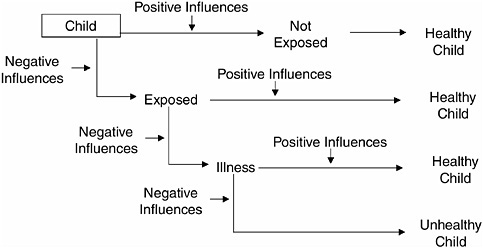
Where services can effect change in healthy development. SOURCE: Children’s Health, the Nation’s Wealth: Assessing and Improving Child Health, p. 85.
children’s health. States and communities also should strengthen their efforts, with expanded federal support, to monitor children’s health and coordinate their findings with federal programs. In addition, the report identifies wide-ranging opportunities for research. Advances are needed, for example, in deciphering the unique susceptibilities of children to a variety of toxins and other environmental health hazards, and in understanding how health promotion interventions in early childhood or adolescence can modify trajectories and health outcomes in adult years. This report is from the Board on Children, Youth, and Families, a shared activity of the IOM and the National Research Council’s (NRC) Division of Behavioral and Social Sciences and Education.
Children’s Health, the Nation’s Wealth: Assessing and Improving Child Health (2004) offers a new framework for measuring the health of children from birth through age 18 and provides a foundation on which to build a comprehensive children’s health measurement system.
ENSURING ADEQUATE NUTRITION FOR HEALTH AND DEVELOPMENT
Improving the health of America’s children requires special attention to the needs of mothers and children who are at high risk of malnutrition. The Special Supplemental Nutrition Program for Women, Infants, and Children—commonly called the WIC program—provides supplemental food, nutrition education, and
other valuable services to low-income pregnant or postpartum women, infants, and children to age 5 years. Administered by the U.S. Department of Agriculture (USDA), it is one of the nation’s largest nutrition programs, reaching millions of families each year. Although WIC has demonstrated great success, a number of factors at work in today’s society are creating new challenges. In response, the USDA asked the IOM to evaluate one of the program’s main components, the food packages that are supplied to participants, and to determine if revisions are needed. The food packages, which WIC participants typically obtain by redeeming vouchers or checks for specific foods at local grocery outlets, have remained largely unchanged since the program’s inception in 1974.
In a key revision, the packages are restructured to encourage participants to consume more fruits and vegetables (especially fresh produce) and to switch to more whole-grain varieties of cereals and bread, shifts that are in line with new federal dietary guidelines.
The first report, Proposed Criteria for Selecting the WIC Food Package (2004), evaluated the dietary needs and intakes of the WIC-eligible population and identified which food groups and nutrients needed priority attention. WIC Food Packages: Time for a Change (2006) builds on this foundation, proposing a number of changes to ensure that the packages promote a healthy diet and encourage breast-feeding, among other goals. Proposed packages give participants more options in their food choices and are individually tailored to the needs of specific groups, including infants, children, individuals with special dietary needs, and women (based on whether
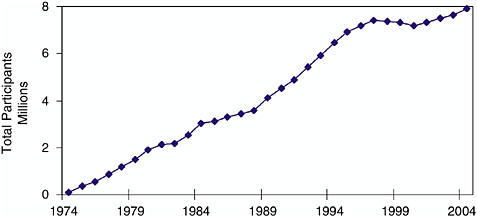
Annual number of participants in the WIC Program constructed from monthly averages of participants, fiscal years 1974-2004. SOURCE: WIC Food Packages: Time for a Change, pp. 1-8.
they are fully breast-feeding, partially breast-feeding, or not breast-feeding). In a key revision, the packages are restructured to encourage participants to consume more fruits and vegetables (especially fresh produce) and to switch to more whole-grain varieties of cereals and bread, shifts that are in line with new federal dietary guidelines. The new packages also are attractive for breast-feeding mothers, and they would provide incentives for breast-feeding, especially full breast-feeding. Foods in the packages are commonly consumed and take into account cultural food preferences, and they are widely available in forms suitable for low-income persons who may have limited transportation, storage, and cooking facilities. Importantly, the packages overall do not cost more than current versions. Given that the proposed changes are likely to entail significant adjustments among WIC participants and could result in some unanticipated effects, the report suggests that the USDA introduce the new food packages in a number of pilot tests before they are implemented nationwide.
THE EPIDEMIC OF CHILDHOOD OBESITY
A walk down the street of any American town or city, or a visit to any school or sports event, exposes the epidemic of obesity that has overtaken the nation’s children and adolescents. Because the consequences of this epidemic are less immediate and dramatic than the major childhood epidemics of prior generations, such as polio, the nation has been slow to grasp the immediate and long-term consequences.
The report finds that preventing childhood obesity on a national scale will require a comprehensive approach that begins with the family and involves government at all levels, industry and media, communities, schools, and health-care professionals. A total effort will be needed to increase and improve opportunities for children to eat healthful diets and to engage regularly in physical activity—the essential keys to preventing obesity.
Preventing Childhood Obesity: Health in the Balance (2004) examines the various factors that promote childhood obesity, identifies promising methods for prevention, describes continuing research needs, and assigns responsibilities for action across a broad sweep of society. Requested by Congress, the report finds that preventing childhood obesity on a national scale will require a comprehensive approach that begins with the family and involves government at all levels, industry and media, communities, schools, and health-care professionals. A total effort will be needed to increase and improve opportunities for children to eat healthful diets and to engage regularly in physical activity—the essential keys to preventing obesity. Importantly, the nation cannot wait to design a “perfect” prevention program in which every intervention has been scientifically
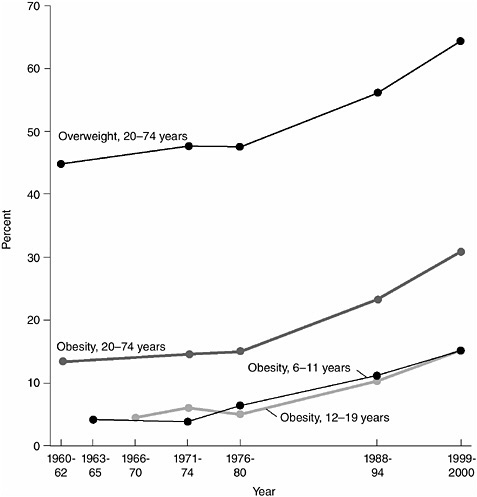
Overweight and obesity by age in the United States, 1960-2000. SOURCE: Preventing Childhood Obesity: Health in the Balance, p. 63.
tested ahead of time to guarantee success. Wide-ranging interventions are needed now, based on the best available evidence, while research continues to refine ongoing efforts. Some of the recommendations challenge entrenched aspects of American life and business—but the report concludes that if the nation is not willing to make some fundamental shifts in attitudes and actions, obesity’s toll on the health and well-being of children and youth will only worsen.
Encouragingly, the report’s recommendations are being put into practice. The report called on the DHHS to convene a national conference drawing
together representatives from industry, public heath, and consumer advocacy groups to develop guidelines for the advertising and marketing of foods, beverages, and sedentary entertainment directed at children and youth. Industry would then be responsible, on a voluntary basis, to implement the guidelines, and the Federal Trade Commission (FTC) would monitor compliance and propose more stringent regulations if industry fails in its actions. In response, the FTC and DHHS organized a public workshop—held in July 2005—on Marketing, Self-Regulation, and Childhood Obesity. Stakeholders shared their perspectives on the food and beverage marketing practices to children, industry self-regulatory efforts, and current or planned initiatives taken by individual companies to respond to childhood obesity through changes in their products, packaging, and marketing guidelines and practices.
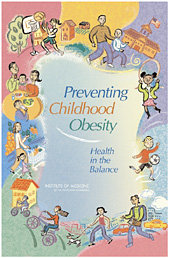
Several leading food companies have taken constructive steps to expand healthier options. Kraft Foods, PepsiCo, and General Mills all announced new initiatives in January 2005 to increase the availability and visibility of their more nutritious products. One program involves using a prominent company logo to label branded products that meet specific nutrition criteria based on IOM report recommendations and the Food and Drug Administration’s (FDA’s) guidelines. Other initiatives involve shifting the mix of products available to children in schools to more nutritious options, and setting guidelines on advertising healthier options in media viewed primarily by children toward more nutritious items. All three companies have expressed support for the IOM report’s proposal to strengthen industry self-regulation of food and entertainment advertising to children.
CONSEQUENCES OF UNDERAGE DRINKING
Underage drinking is a major problem in the United States. Youth drinking is associated with a variety of health risks, as well as with traffic injuries and fatalities, violence, unsafe sex, suicide, educational failure, and other behaviors that diminish the prospects of future success. And the earlier teens start drinking, the greater the danger. Numerous programs are under way to reduce or prevent underage drinking, but little is known about the comparative success of differing approaches. Congress asked the IOM and the NRC to review the evidence on various existing programs, including media-based programs, and to
recommend a strategy for addressing the problem. Reducing Underage Drinking: A Collective Responsibility (2003) offers a comprehensive plan with 10 core components. These components include creating a national partnership dedicated to reducing underage drinking, developing a national adult-oriented media campaign to sustain a broad national commitment and address misperceptions about youth drinking, reducing underage exposure to unsuitable messages in alcohol advertising and marketing, reducing youth exposure to unsuitable messages in the entertainment media, limiting youth access to alcohol, implementing evidence-based youth oriented interventions, mobilizing communities, increasing federal and state excise taxes to both decrease consumption and raise revenue for the plan, improving government coordination and monitoring, and implementing expanded and ongoing research and evaluation. These strategies will require shared commitment and efforts by national, state, and local governments; the alcohol and entertainment industries; retailers, restaurants, and bars; schools, colleges, and universities; law enforcement agencies; community organizations; and parents and other adults. Without such coordinated measures, the nation—and its youth—will continue to pay the tragic costs of underage drinking.
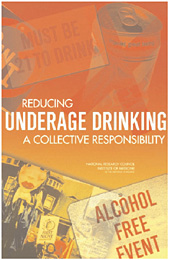
The report generated major media attention, boosted by a NRC and IOM webcast news conference and related press activities. The New York Times, The Washington Post, The Wall Street Journal, and The Los Angeles Times ran lengthy articles (some on the front page) and supporting editorials. Television and radio gave the report ample play, and wire services circulated stories nationally. Countless local media outlets followed the breaking story.
These strategies will require shared commitment and efforts by national, state, and local governments; the alcohol and entertainment industries; retailers, restaurants, and bars; schools, colleges, and universities; law enforcement agencies; community organizations; and parents and other adults.
A host of organizations enthusiastically offered their support. The American Medical Association “applauded” the report in a news release and circulated a fact sheet summarizing its findings and recommendations. The Governors Highway Safety Association declared itself “heartened by the recommendations” and “looking forward to working with the federal government and other partners to see that its recommendations are implemented.” Mothers

Prevalence of any use, heavy use, and frequent, heavy use of alcohol in the past 30 days, for youths aged 12 to 20, 2000. SOURCE: Reducing Underage Drinking: A Collective Responsibility, p. 42.
Against Drunk Driving praised the findings as “an important step in finally putting underage drinking on the nation’s policy and public health agenda.” The Center for Science in the Public Interest announced that the report “signals a historic first step toward ending decades of complacency about one of the most damaging and widespread public health and safety threats facing society.” In later recognition, Students Against Destructive Decisions gave its 2005 Outstanding Contribution Award for Academic Excellence to the study committee that produced Reducing Underage Drinking: A Collective Responsibility.
Government officials took notice as well. Numerous senators and representatives issued statements calling the report a national wake-up call. Importantly, governmental gears also started turning. Congress required the DHHS to form an interagency group focused on underage drinking, as the report recommends. Funds also have been appropriated for the National Ad Council to conduct a parent-oriented campaign against underage drinking. Both the Senate and the
House have introduced legislation proposing the Sober Truth on Preventing Underage Drinking Act—appropriately shortened to the STOP Underage Drinking Act. The legislative proposal prominently cites the NRC/IOM report and incorporates many of its recommendations, including establishing an interagency coordinating committee, conducting a national media campaign, and providing grants to community-based coalitions to support prevention intervention efforts. “It is the sense of the Congress,” the proposal states, that “a multifaceted effort is needed to more successfully address the problem of underage drinking in the United States.”
CHILDHOOD IMMUNIZATION
Childhood vaccines are the single most important contribution that medicine and public health have made to protect children from disease, lifelong disability, or premature death. Yet in recent years, the very absence of the diseases that population-wide immunization have prevented has caused complacency among many parents about the need to immunize their children. Further, the hypothetical but widely publicized assertions that childhood vaccines are responsible for an increase in diagnosed cases of autism have alarmed many parents. Because vaccines are so widely used—and because state laws require that children be vaccinated to enter daycare and school, in part to protect others—immunization safety concerns are a serious matter.
In an effort to help ensure safety, the Centers for Disease Control and Prevention and the National Institutes of Health (NIH) asked the IOM to review some of the concerns that have emerged in recent years about the safety of vaccination. The IOM has a long history in assessing vaccine safety, having issued its first major report on this subject in 1977. The Immunization Safety Review Committee established to conduct the reviews included independent health professionals with wide-ranging expertise. Members had no ties to vaccine manufacturers, had not conducted research on vaccine safety, and had not served on any vaccine advisory committees. The committee published a series of eight reports under the general title Immunization Safety Review. Immunization Safety Review: Vaccines and Autism (2004) addresses one of the most contentious recent issues regarding vaccine safety: the hypothesized link, proposed in 1998, between certain types of vaccines and autism. At question are the measles-mumps-rubella (MMR) vaccine administered to
Based on a thorough review of clinical and epidemiological studies, the report concludes that neither the MMR vaccine nor the preservative thimerosal are associated with autism.
children in the series of early childhood immunizations, and vaccines that contain thimerosal, a mercury-based preservative once used in some vaccines and still used in tiny amounts in some types of influenza vaccines. Based on a thorough review of clinical and epidemiological studies, the report concludes that neither the MMR vaccine nor the preservative thimerosal are associated with autism. Moreover, the hypotheses regarding how the MMR vaccine and thimerosal could trigger autism lack supporting evidence and are theoretical only. Further research to find the cause of autism should be directed toward other lines of inquiry that are supported by current knowledge and evidence and offer more promise for providing an answer.
IMPROVING THE SAFETY AND QUALITY OF TREATMENTS
Advances in biomedical science and engineering have yielded a range of medical devices that have reduced the burden of illness and injury and improved the quality of live for countless children. For example, children who once would have died from congenital heart conditions now survive with the aid of such implanted devices as pacemakers and mechanical heart valves. The FDA is charged with the responsibility of ensuring that medical devices are safe—for children and adults alike. In 2002, Congress passed the Medical Device User Fee and Modernization Act, which, among other actions, called on the IOM to evaluate one particular component of the FDA’s regulatory efforts—the postmarketing surveillance of pediatric medical devices. Children’s rapid growth and development, as well as their smaller size and typically active lifestyles, can affect the longevity, effectiveness, and safety of devices that are used long term. Postmarketing surveillance is intended to detect early on any safety problems that may arise as the devices are used with larger and more varied populations and in circumstances different from those examined during pre-market evaluations. Safe Medical Devices for Children (2006) details a number of shortfalls in the FDA’s performance and recommends steps toward improvement. Among major problems, the agency lacks effective procedures for monitoring the status of postmarket studies that manufacturers are sometimes required to undertake, and it lacks programs for communicating information about the studies to the public. Congress should take steps to ensure that the FDA establishes a reliable system for monitoring and publicly reporting the status of postmarket studies involving medical devices used in all populations.
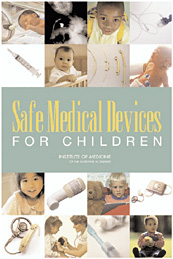
This public database should, among other features, enable parents, health-care providers, researchers, and others to easily determine the status of studies that involve questions about the use of devices in children. In addition, Congress should expand the FDA’s authority, as part of its regulatory clearance process, to order manufacturers to conduct postmarket studies of certain types of devices that currently are exempt. Congress also should remove the current 3-year limit on studies ordered after a device is cleared or approved in cases where devices are intended for use in pediatric patients and where such issues as children’s growth and development cannot be adequately addressed in shorter periods.
Congress should take steps to ensure that the FDA establishes a reliable system for monitoring and publicly reporting the status of postmarket studies involving medical devices used in all populations. This public database should…enable parents, health care providers, researchers, and others to easily determine the status of studies that involve questions about the use of devices in children.
Cancer during childhood and adolescence has been transformed since the 1950s from a death sentence into long-term survival for most individuals who get state-of-the-art treatment. Success has come mainly through more intense use of decades-old drugs developed originally for adult cancers. In recent years, however, the death rate from childhood cancers has remained virtually unchanged. This means simply using today’s drugs is not enough—and the scientific community must find new drugs that once again will help to drive down the mortality rate from childhood cancers. Making Better Drugs for Children with Cancer (2005), issued jointly by the IOM and the NRC, provides an innovative route for progress. Childhood cancers differ at the molecular level from adult cancers, and these molecular differences represent promising places to start in searching for new drug “targets.” However, market forces are not sufficient to drive the search for drugs specifically tailored for children—the potential market is simply too small for industry to mount major research and development efforts that are unlikely to recoup their costs. As an alternative pathway, the report calls for establishing a new public-private partnership that joins the capabilities of the NIH, academic laboratories, and the pharmaceutical industry in a virtual research and development network to pursue drugs for childhood cancers. Such networks are relatively new, but are working well for cystic fibrosis, tuberculosis, malaria, and other neglected diseases. Related recommendations call for the government to assume responsibility as the

The report calls for establishing a new public-private partnership that joins the capabilities of the NIH, academic laboratories, and the pharmaceutical industry in a virtual research and development network to pursue drugs for childhood cancers.
developer of last resort when an agent shows promise only in children but companies decide not to proceed with full-scale development, and for the government’s scientific and regulatory bodies to work with industry to reduce the delays that currently plague pediatric clinical testing of new cancer drugs developed for adults.












